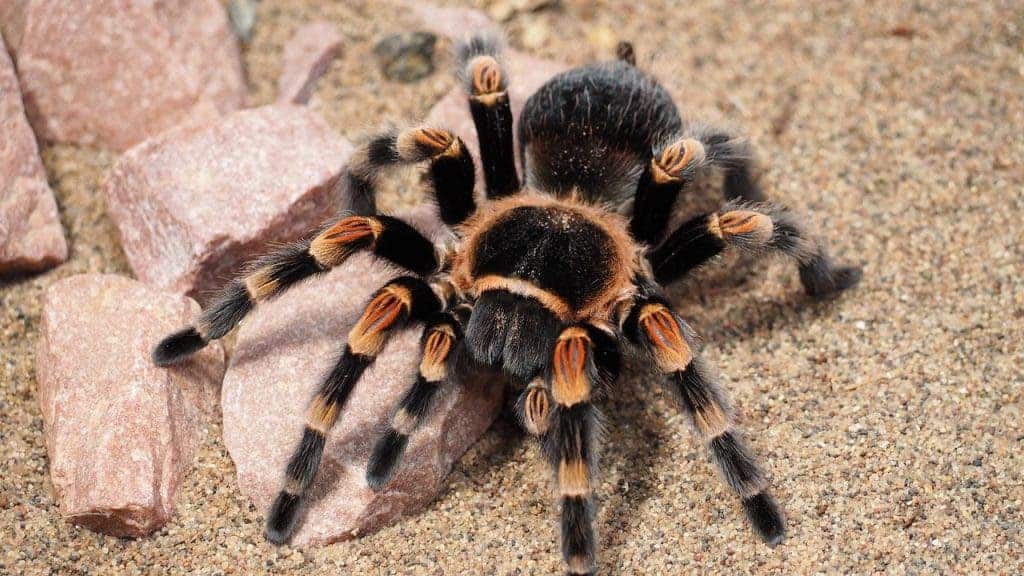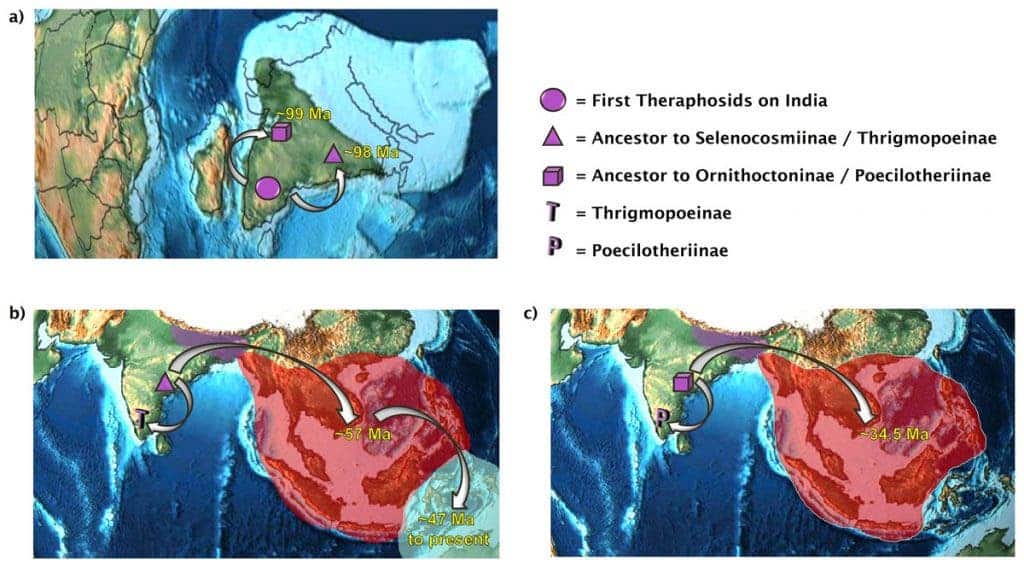
Tarantulas are among the most infamous spiders, in large part due to their size and appearance — with hairy legs, big jaws, and vibrant colors, tarantulas tend to make a splash every time they appear. But one thing puzzled researchers about tarantulas: why are they so widespread around the globe?
Tarantulas are found on all continents (outside of Antarctica), and they are dispersed in many parts of the world. This is especially surprising since individual tarantulas don’t really like to move around much.
“They are quite widespread and are found throughout the subtropical regions of every continent,” a research team led by bioinformatician Saoirse Foley from Carnegie Mellon University explains in a new study.
“[Their] behaviors do not portend that tarantulas would be successful dispersers, yet they have spread across the globe and have colonized strikingly different ecological niches.”
Females and juveniles rarely if ever go out of their burrows, and males usually venture just to look for mates. So how are they so widespread?

To answer this question, Foley and colleagues followed two different trails: the biogeographic dispersion patterns of tarantulas throughout history, as well as their genetic history (from transcriptome databases). They then modeled how tarantulas could have dispersed over their evolutionary history, building an evolutionary tree of tarantulas and calibrating it with known fossil evidence.
They found that tarantulas likely emerged some 120 million years ago during the Cretaceous period, when Tyrannosaurs, velociraptors, and others dinosaurs roamed the planet. This lead researchers to an interesting conclusion: geology did a lot of dispersion work for the tarantulas.
“Previous studies estimate that tarantulas emerged between 150 Ma-71 Ma or ~107 Ma, which is compatible with a Gondwanan origin,” the researchers explain. “Indeed, some tarantulas (Selenocosmiinae) are suggested to be North Gondwanan taxa.”

At the time, many of the world’s current continents were huddled together in a supercontinent called Gondwana, which included Antarctica, South America, Africa, Madagascar, and Australasia, as well as the Arabian Peninsula and the Indian subcontinent. However, some tarantulas also seem to be surprisingly proficient dispersers.
Some tarantulas from India stayed local, but others moved and diversified across Asia, diverging while the Indian tectonic plate was still isolated and drifting towards Asia. These two lineages colonized Asia 20 million years apart.
“Our results indicate that both of these Asian lineages diverged while the Indian Plate was still rafting towards Asia… Interestingly, the two lineages also appear to be ecologically divergent,” the researchers note.
There are currently around 1,000 tarantula species, ranging in size from smaller than a coin to as big as a dinner plate. Their exhibit remarkable variety, and since their fossil record is so sparse, there is still much we don’t know about their evolution and diversification — which is why studies like this one are so important.

Ultimately, the study suggests that geology gave tarantulas a helping hand in spreading across the globe, but could also lead researchers to reconsider tarantulas’ dispersion and adaptability capacity.
“Previously, we did not consider tarantulas to be good dispersers. While continental drift certainly played its part in their history, the two Asian colonization events encourage us to reconsider this narrative. The microhabitat differences between those two lineages also suggest that tarantulas are experts at exploiting ecological niches, while simultaneously displaying signs of niche conservation,” said Foley.
Journal Reference: Saoirse Foley, Henrik Krehenwinkel, Dong-Qiang Cheng, William H. Piel. Phylogenomic analyses reveal a Gondwanan origin and repeated out of India colonizations into Asia by tarantulas (Araneae: Theraphosidae). PeerJ, 2021; 9: e11162 DOI: 10.7717/peerj.11162









